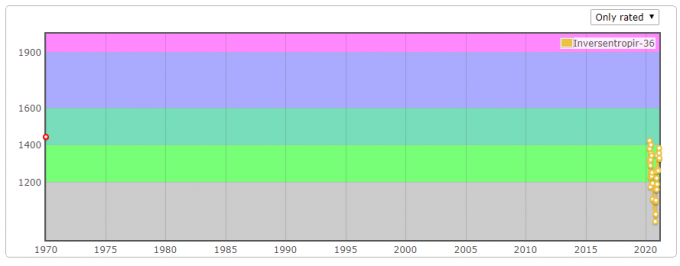| # | User | Rating |
|---|---|---|
| 1 | tourist | 3856 |
| 2 | jiangly | 3747 |
| 3 | orzdevinwang | 3706 |
| 4 | jqdai0815 | 3682 |
| 5 | ksun48 | 3591 |
| 6 | gamegame | 3477 |
| 7 | Benq | 3468 |
| 8 | Radewoosh | 3462 |
| 9 | ecnerwala | 3451 |
| 10 | heuristica | 3431 |
| # | User | Contrib. |
|---|---|---|
| 1 | cry | 167 |
| 2 | -is-this-fft- | 162 |
| 3 | Dominater069 | 160 |
| 4 | Um_nik | 158 |
| 5 | atcoder_official | 157 |
| 6 | Qingyu | 156 |
| 7 | djm03178 | 151 |
| 7 | adamant | 151 |
| 9 | luogu_official | 150 |
| 10 | awoo | 147 |
Give you an undirected graph with no guarantee of connectivity, Erase 2 edges to minimize the maximum connected block. You only need to output The size of the largest connected block.
How to solve it in less than O(N^2) Time Complexity ?
Sorry of my suck English :(
UPD: We have found an another O(N^2) Algorithm. We can check all edges, try to delete the edges that we are checking, and then use the Tarjan's algorithm (Tarjan, R. E. (1974). "A note on finding the bridges of a graph") for the remaining edges. Perhaps optimizing this algorithm can reduces time complexity.
Just like title, Is it better to open the memory pool or a vector to save a graph?
I personally like using Vector to save a graph...
I just learned graph theory, so I don't know how to use it. :(
memory pool:
struct Edge{
int next;
int to;
int w;
};
void add(int u,int v,int w) {
edge[cnt].w = w;
edge[cnt].to = v;
edge[cnt].next = head[u];
head[u] = cnt++;
}
1.introduction
As everyone knows, my friend Billy2007 is not good at The algorithm of tree, So I and he write this blog.
LCA , that is, the recent Common ancestor, refers to the root tree, find out one or two nodes u and v recent Common ancestor.
2.how to ask LCA?
For example:
Given a tree with multiple branches, the public ancestor that is closest to the specified two points is requested.
Input: The first line contains three positive integers, $$$N,M,S$$$ which respectively represent the number of nodes in the tree, the number of inquiries, and the number of root nodes. Next, $$$n-1$$$ rows each contain two positive integers $$$x, y$$$ indicating that there is a directly connected edge between $$$x$$$ node and $$$y$$$ node (the data is guaranteed to form a tree). Next, $$$M$$$ rows each contain two positive integers $$$a$$$,$$$b$$$, which means that the nearest common ancestor of $$$a$$$ and $$$b$$$ is inquired.
Output: The output contains $$$M$$$ rows, each containing a positive integer, which in turn is the result of each query.
Guys,how to solve it?
2.1.Brute force(XD)
Let the two points search like merge-find set :
struct node{
int bianh;
int fa,chd[N/1000];
node(){
fa=0;
bianh=0;
memset(chd,0,sizeof(chd));
}
};
int lca(int a,int b){
if(a==b) return a;
return lca(nd[a].fa,nd[b].fa);
}
But there is some problem with this algorithm.
Obviously we don't know if $$$a$$$ is the father of $$$b$$$ or $$$b$$$ is the father of $$$a$$$.
This problem can be solved by depth-first search.
But, This algorithm will waste lots of Meomry.
And even if it were possible, the DFS time complexity is $$$O(n)$$$, every time the worst time complexity is $$$O(n)$$$, the total time complexity is $$$O(nm)$$$, will definitely TLE.
2.2.Multiplication algorithm
We can use the multiplication algorithm -- an algorithm that achieves $$$O(\log n)$$$ to ask the LCA by recording the first $$$2^i$$$ generation of $$$a$$$.
Will update after 6 hours.
| Name |
|---|











